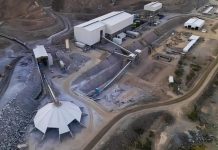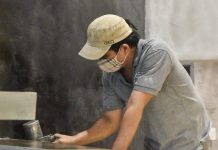This is an article contributed by the Embassy of Angola in Korea
The sharp drop in oil prices and more recently the pandemic of COVID-19 have compelled the Angolan Government to take measures that contribute to mitigate the effects of the crisis and the scenario of uncertainty that involves the national economy.
In the set of measures adopted to mitigate the crisis, one of the sectors identified, capable of supporting the diversification of the economy and contributing to the increase of non-oil exports, is that of ornamental rocks, namely granite and marble.
In Angola, the sector of ornamental rocks still remains in a reduced dimension, being focused, mainly to extraction, with few productive units for transforming and enhancing the product, despite 40% of the Angolan surface being covered with ornamental rocks.
In this sense, the Angolan Government is, at this moment, encouraging foreign private investment in the sector of ornamental rocks, in particular granite and marble, with a view to exploring the southern region of the country, mainly comprising the provinces of Huila and Namibe, in order to make them the center, par excellence, for the transformation of ornamental rocks.
It should be noted that Angola has about 38 of the top 50 minerals used in various industries, such as diamond, iron, gold, phosphate, manganese, copper, lead, zinc, wolfram, tungsten, titanium, chromium, marble, uranium, etc.
As a strategy for the importance of these minerals, the government attributes to scientific research a relevant role in stimulating the sustainable use of the country’s mineral wealth. To this end, it recently opened a geological institute, the Instituto Geologico de Angola (IGEO), equipped with the latest generation technology to provide credible geological information to the State, as well as to investors and researchers.
This institution is located in Luanda, with an area of ??44,650 square meters that includes a headquarters building, laboratories for physical prospecting and chemical analysis, in addition to a social area. The laboratories are equipped with modern equipment for the physical preparation of geological samples, chemical and physical analysis of rocks, minerals and water.
In addition to Luanda, the IGEO has regional centers in the city of Lubango (Huila) and Saurimo (Lunda Sul) and adds a geological database of the Angolan territory, previously produced and within the scope of the National Geology Plan (PLANAGEO). The Luanda laboratory has the most complete function, with a focus on microanalysis. Lubango’s, in addition to generic analysis, is capable of preparing and analyzing ornamental rocks and minerals, while Saurimo’s carries out analysis of generic geosciences.
Correspondingly, within the framework of the restructuration in the mining sector, the Angola Government approved a new governance model, with the creation, last April, of the National Agency for Mineral Resource (ANRM), which is mainly responsible for the regulation of this important area, by solidifying the constant dialogue with the business community and the main agents involved in this economic activity.
In this regard, the ANRM plans, prepares and launches the mining concession for free market, negotiates, manages and monitors the contracts and execution.
For the reasons presented earlier, it is worth mentioning that Angola has favorable economic strengths and perspectives, which, if well used, can promote inclusive, broad economic growth and boost the development of other areas, such as public works, civil construction and agro-industry.
It should be noted that the existence of different climates also favors the development of varied agricultural production during the 12 months of the year, with an area of ??arable land of 35 million hectares, of which only 14 percent is being used.
In fact, 69 million hectares of forest extension comprises wood of great economic value, such as ebony, sandalwood and jacaranda and commercial plantations of pine and eucalyptus.
Other aspects to consider are the geo-strategic position of Angola that allows investors to access the regional market (SADC), of 16 countries, with a total GDP of USD $600 billion, with more than 200 million consumers, in addition to the its internal market composed of 30 million inhabitants. Angola is limited to the west by the Atlantic Ocean, to the south by the Republics of Namibia and Botswana, to the north by the Republic of Congo, to the northeast by the Democratic Republic of Congo and to the east by the Republic of Zambia.
In legislative terms, the New Private Investment Law (Law No. 10/18 of June 26) in its Article 14 ensures that the State respects and protects the property rights of private investors; Article 15 establishes that the Angolan State guarantees all private investors access to Angolan courts to defend their interests, with due process, protection and security guaranteed.
It should also be noted that, since 2020, the import of capital from foreign investors wishing to invest in Angola with companies or projects in the private sector, as well as exporting the profits associated with these investments, are exempt from licensing by the Angolan Central Bank, in this case the National Bank of Angola (BNA).
Consequently, there is a strong interest on the part of the government to create more attractive conditions to encourage foreign investment, which is reflected in efforts to create a more favorable social and political climate, in new legislation on private investment and in further liberalization of financial transactions to ensure against any risk that may occur in the transfer of profits.
As can be seen, being related to a very attractive and competitive sector, the Angolan Government intends to improve the attracting of foreign direct investment with the participation mainly of large multinationals and reputable South Korean companies, creating conditions for increasing interactivity and empathy between operators and agents driving the development of the two countries.
Source: www.koreatimes.co.kr





































